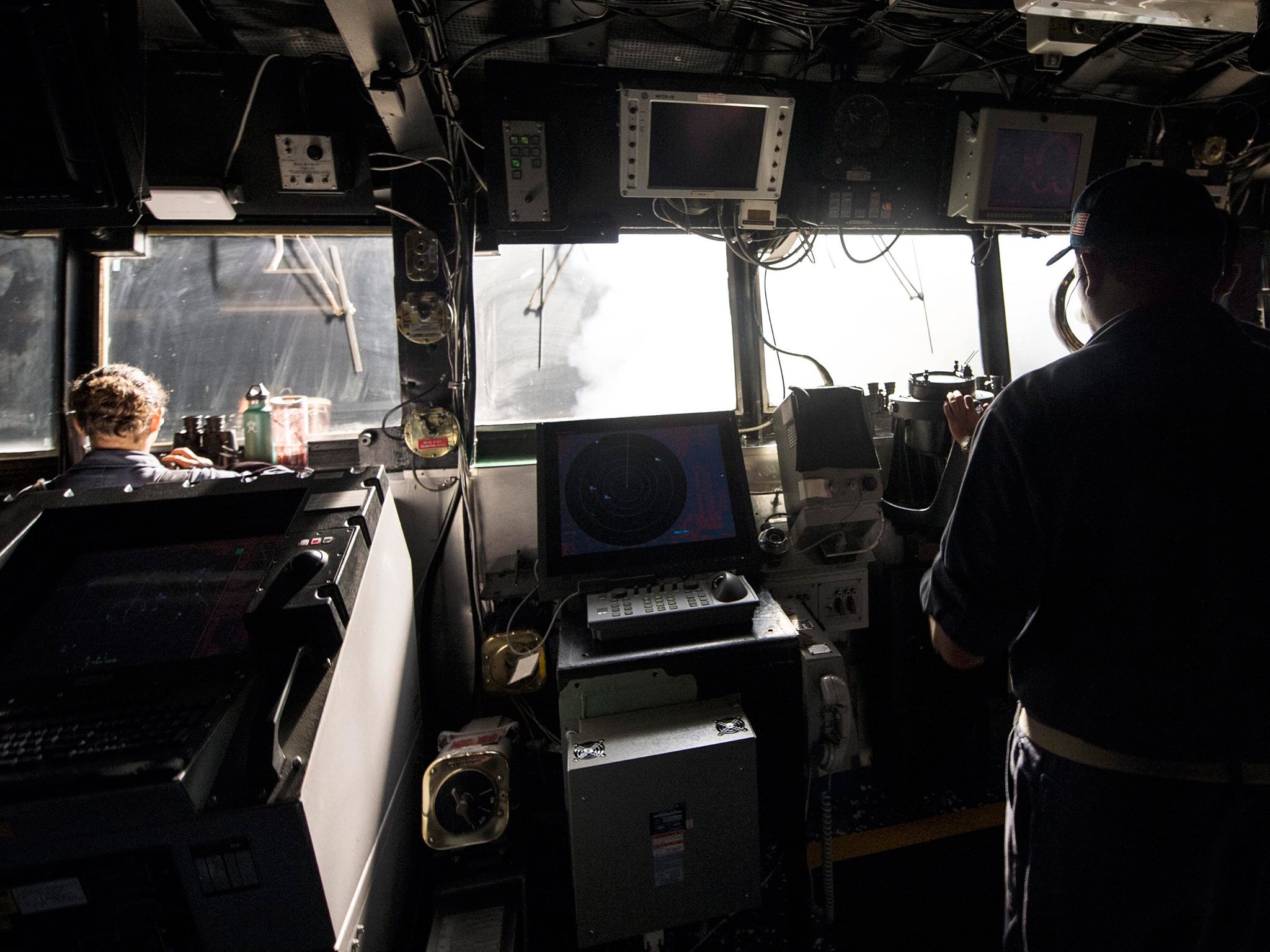Syria air strikes: 47 Tomahawk cruise missiles were launched from two US Navy destroyers
One ship was in the Gulf and another in the Red Sea

The new round of US military strikes in Syria announced overnight by the Pentagon against Isis militants included many of the same weapons and aircraft the Pentagon has used in recent weeks in Iraq. But it included a new wrinkle, too - the use of Tomahawk cruise missiles launched by the US Navy from the Arabian Gulf and the Red Sea.
Navy Rear Adm. John Kirby, the Pentagon press secretary, confirmed the strikes in a statement. He said the decision to conduct them was made earlier in the day by Army Gen. Lloyd Austin, the head of US Central Command. The strikes were still ongoing, meaning officials were “not in a position to provide additional details at this time,” Kirby said.
US military officials with CENTCOM said early on Tuesday that it had launched a combined 47 missiles from two destroyers, the USS Philippine Sea, a guided missile cruiser, and the USS Arleigh Burke, a destroyer. The first ship was in the Arabian Gulf; the second in the Red Sea. The Philippine Sea is part of the USS George H.W. Bush Carrier Strike Group, which includes an aircraft carrier by the same that the US military has been using for weeks to launch airstrikes in Iraq.
The missiles were launched as part of 14 military strikes on Islamic State targets in Syria overnight, defense officials said. They were used as US fighter jets, bombers and drones also dropped ordnance in Syria on militants, their training compounds, headquarters, storage facilities, supply trucks, armed vehicles and a finance center, CENTCOM said.
The US also launched four more airstrikes in Iraq on Monday, bringing the total number since they were authorised there by the White House on 7 August to 194. They’ve been carried out by a mix of fighter jets, bombers and drone aircraft, but the US military had not previously disclosed using Tomahawks against the militants.
The cruise missiles have been used by the US military for decades, most extensively in the 1991 Gulf War against Iraq and around the 2003 US invasion of the same country. But they also have been fired more recently at targets in Libya in 2011, and were put in position in the eastern Mediterranean to launch strikes in Syria in August 2013, as the Obama administration accused Syrian President Bashar al-Assad’s regime of using chemical weapons against its own people.
The Tomahawk strikes in Syria last year were eventually called off, as Obama sought congressional approval. On Sept. 14, 2013, Russia and the United States reached an agreement in which Syria’s declared chemical weapons would instead be destroyed at sea by a US crew on the MV Cape Ray, a cargo ship specifically equipped for the mission.
Two weeks ago, a Navy official said the USS Cole, a Navy destroyer carrying the missiles, was in the eastern Mediterranean, but it does not appear it was used late Monday in the strikes. The missiles also can be launched from US submarines, but defense officials do not commonly disclose where underwater ships in the so-called “Silent Service” are.
The Tomahawk, made by Raytheon, is about 18 feet long and typically carries a 1,000-pound warhead. Some versions have a range of more than 1,000 miles, Navy officials say. It is typically considered ill-suited to hit moving targets, but can hit stationary targets with precision.
Copyright: Washington Post
Subscribe to Independent Premium to bookmark this article
Want to bookmark your favourite articles and stories to read or reference later? Start your Independent Premium subscription today.

Join our commenting forum
Join thought-provoking conversations, follow other Independent readers and see their replies